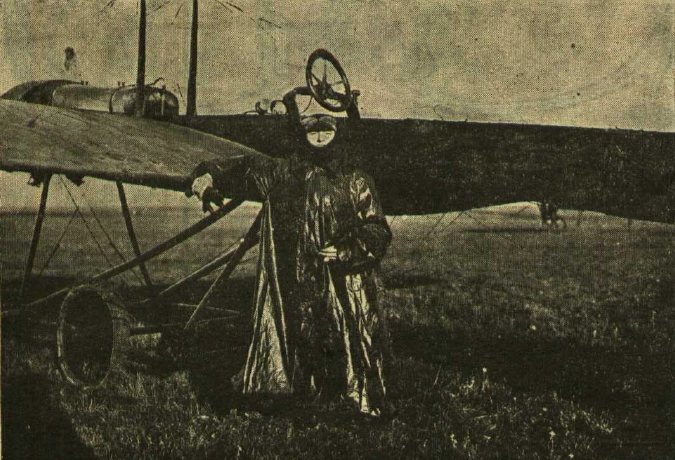Belkıs Şevket was the first Turkish woman to fly in an airplane. With her powerful words, “Womanhood must be brave; it is courage that will save our sacred homeland. Womanhood only flourishes through bravery,” she made a bold statement not only in Turkish aviation history but also for women’s empowerment, demonstrating courage rather than merely speaking of it.
Addressing the women watching her from the ground as she soared over Istanbul, Belkıs Şevket emphasized the critical role women could and should play in aviation. She strongly opposed debates questioning whether women should be involved in aviation, and instead of just arguing, she took action to end such discussions.
In 1913, aboard an aircraft piloted by then-Lieutenant Fethi Bey, one of the first aviator officers of the Ottoman Empire, she took a 15-minute iconic flight over Istanbul’s neighborhoods, including Şişli, the Liberty Monument, Üsküdar, and Kadıköy. The flight was conducted using a single-engine, open-cockpit Deperdussin-type plane named Osmanlı, departing from the Yeşilköy Air School. This historic event attracted widespread attention from the local press, and Belkıs Şevket was hailed as “brave” by both Turkish and foreign media.

Belkıs Şevket was a member of the Müdâfaa-i Hukûk-u Nisvân Cemiyeti (Women’s Rights Defense Society) and a writer for the magazine Kadınlar Dünyası (Women’s World). When public discussions emerged regarding women’s interest in aviation, she formally requested to board an aircraft. Her aim was not only to make a symbolic statement but also to support the organization’s fundraising campaign for the Turkish military. She even dropped leaflets from the plane during the flight to contribute to the campaign. Although the campaign itself did not receive the expected level of attention, her flight made a major impact in the ongoing dialogue about women’s roles in society.
The event highlighted the significance of women participating in social movements and demonstrated how aviation could serve as a tool for both propaganda and civic engagement.
More than a century later, in 2019, Türkiye’s Directorate General of Civil Aviation (SHGM) established the Commission for the Development of Gender Balance in Civil Aviation, which formally recognized the contributions of women in the field with concrete data. On January 4, 2019, Belkıs Şevket was officially honored by the commission with the title: “The First Turkish Woman to Fly in an Airplane.”
The pilot who flew Belkıs Şevket was Mehmet Fethi Bey, one of the first aviator officers of the Ottoman Empire and a key figure in the development of Turkish aviation. He became Türkiye’s first aviation martyr when his aircraft crashed due to a technical malfunction near Damascus during a flight from Istanbul to Cairo on February 8, 1914.
In his memory, along with his fellow martyrs, the Aviation Martyrs’ Monument was erected in Fatih Park, Saraçhanebaşı, in Istanbul’s Fatih district. This tragic event also influenced Mustafa Kemal Atatürk’s decision to rename the district of Meğri in Muğla province to Fethiye, an enduring tribute to Fethi Bey’s legacy. The crash remains one of the most significant events in the history of Turkish aviation.



